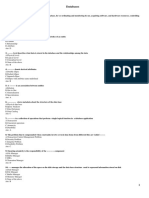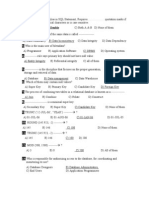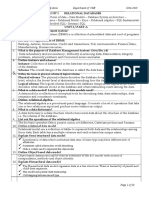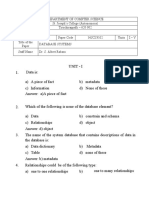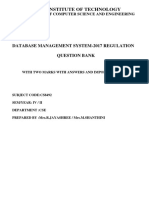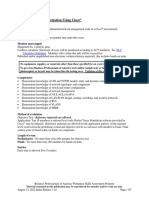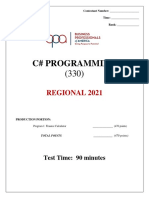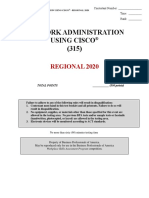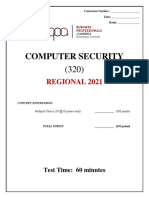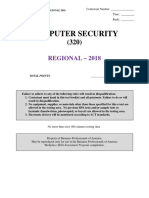0% found this document useful (0 votes)
185 views12 pages345 - SQL Database Fundamentals - R - 2019
The document provides a practice test for an SQL database fundamentals competition. It consists of a multiple choice test with 38 questions covering topics like SQL statements, database concepts, keys, data types, and integrity. The test is to be completed within 60 minutes and aims to challenge students on their knowledge of SQL and relational databases.
Uploaded by
avfg gfavdCopyright
© © All Rights Reserved
We take content rights seriously. If you suspect this is your content, claim it here.
Available Formats
Download as PDF, TXT or read online on Scribd
0% found this document useful (0 votes)
185 views12 pages345 - SQL Database Fundamentals - R - 2019
The document provides a practice test for an SQL database fundamentals competition. It consists of a multiple choice test with 38 questions covering topics like SQL statements, database concepts, keys, data types, and integrity. The test is to be completed within 60 minutes and aims to challenge students on their knowledge of SQL and relational databases.
Uploaded by
avfg gfavdCopyright
© © All Rights Reserved
We take content rights seriously. If you suspect this is your content, claim it here.
Available Formats
Download as PDF, TXT or read online on Scribd
/ 12






